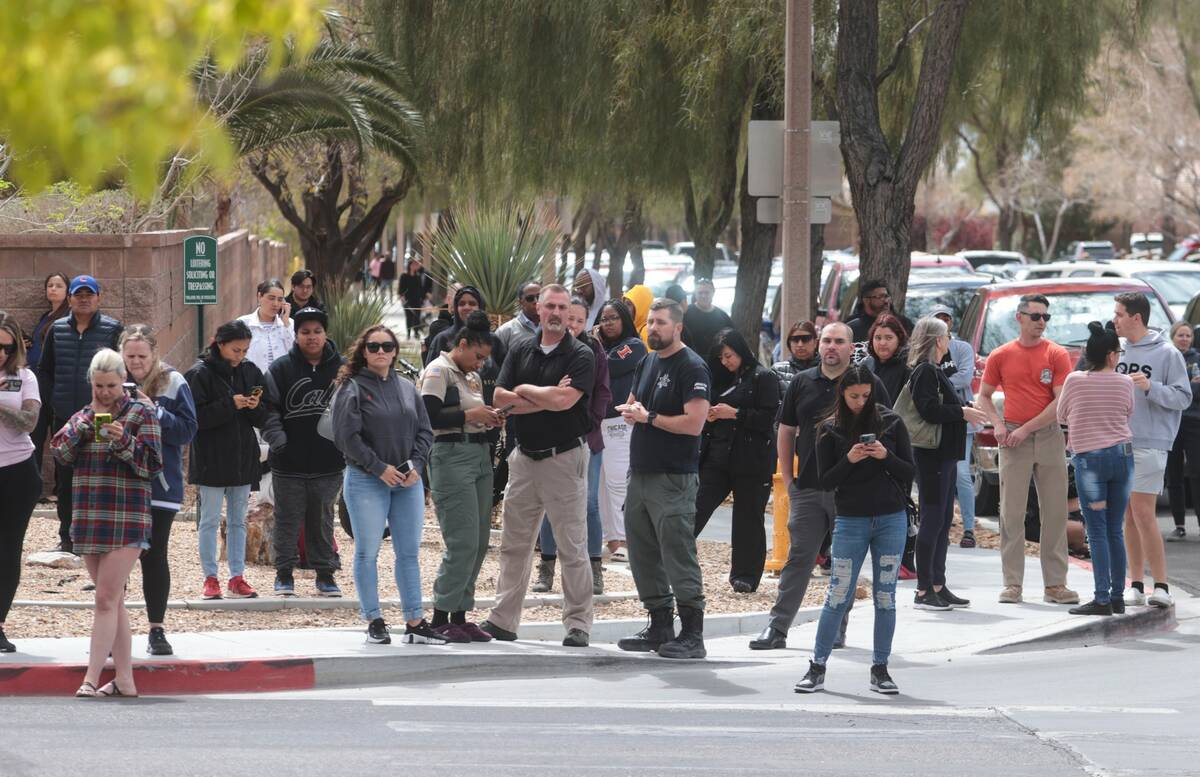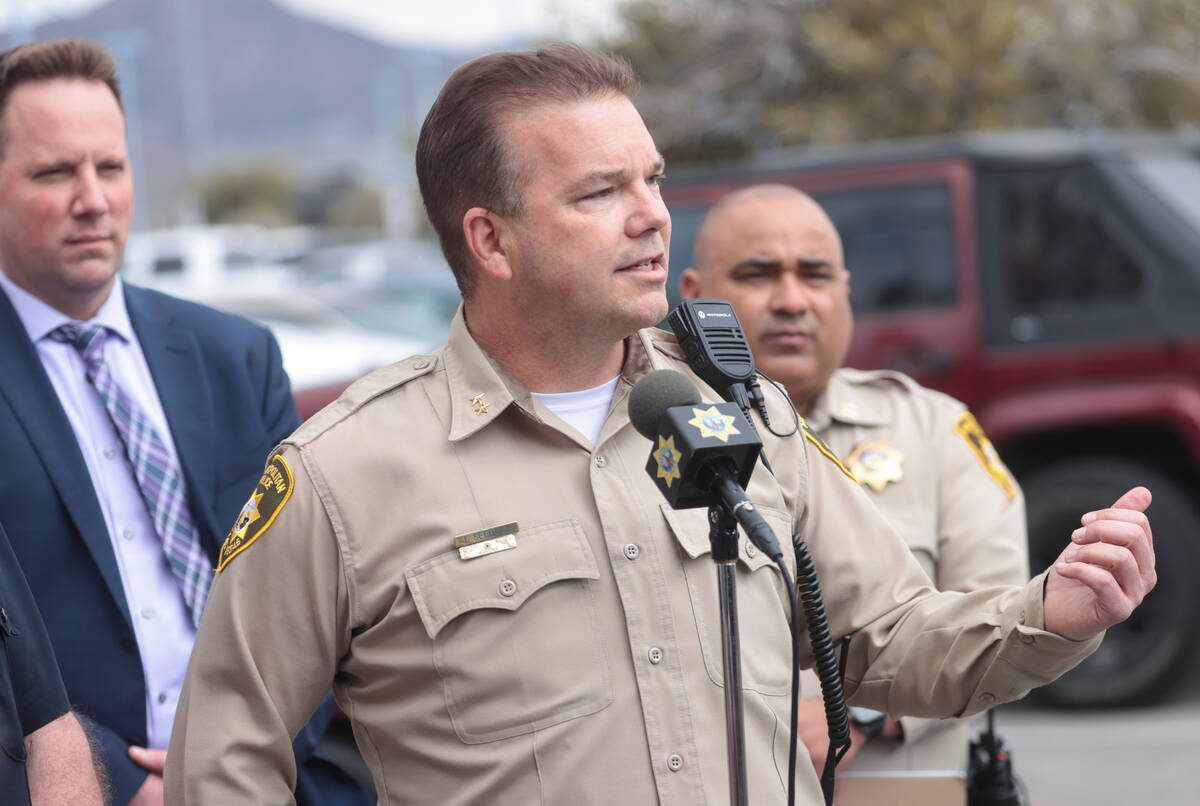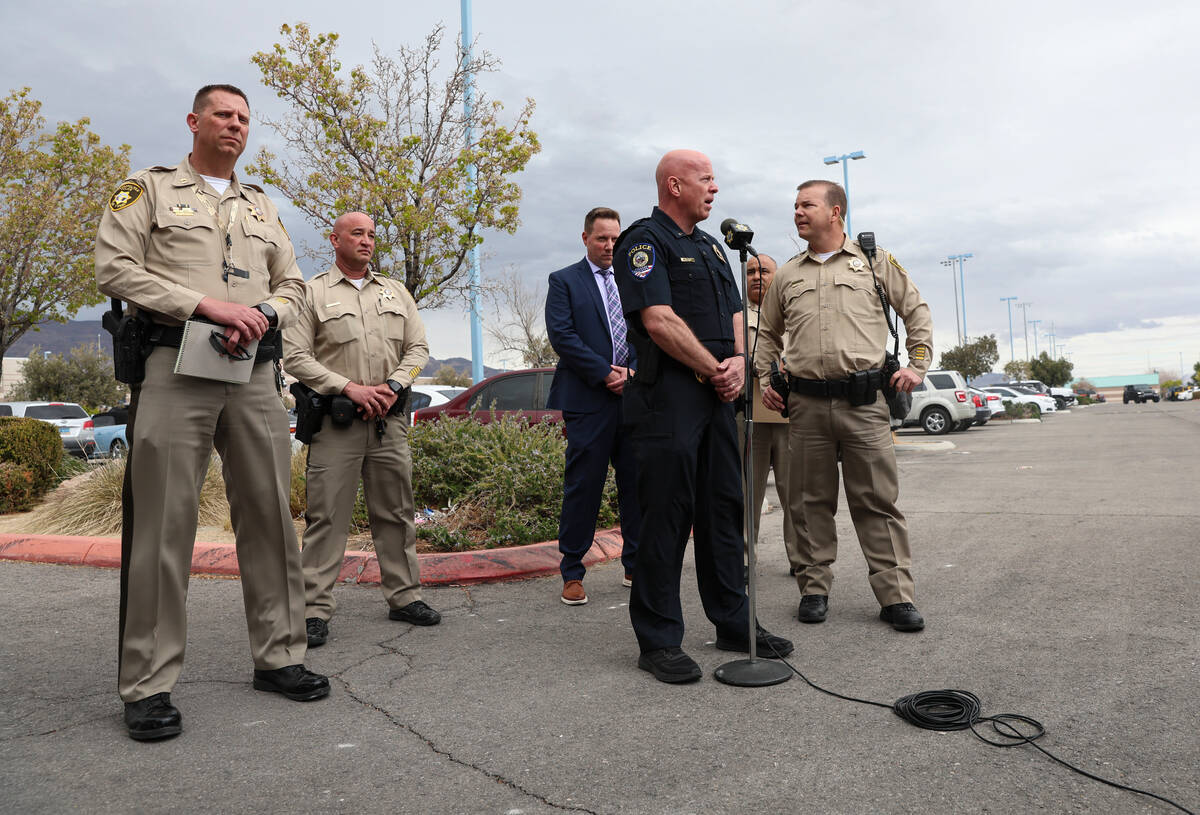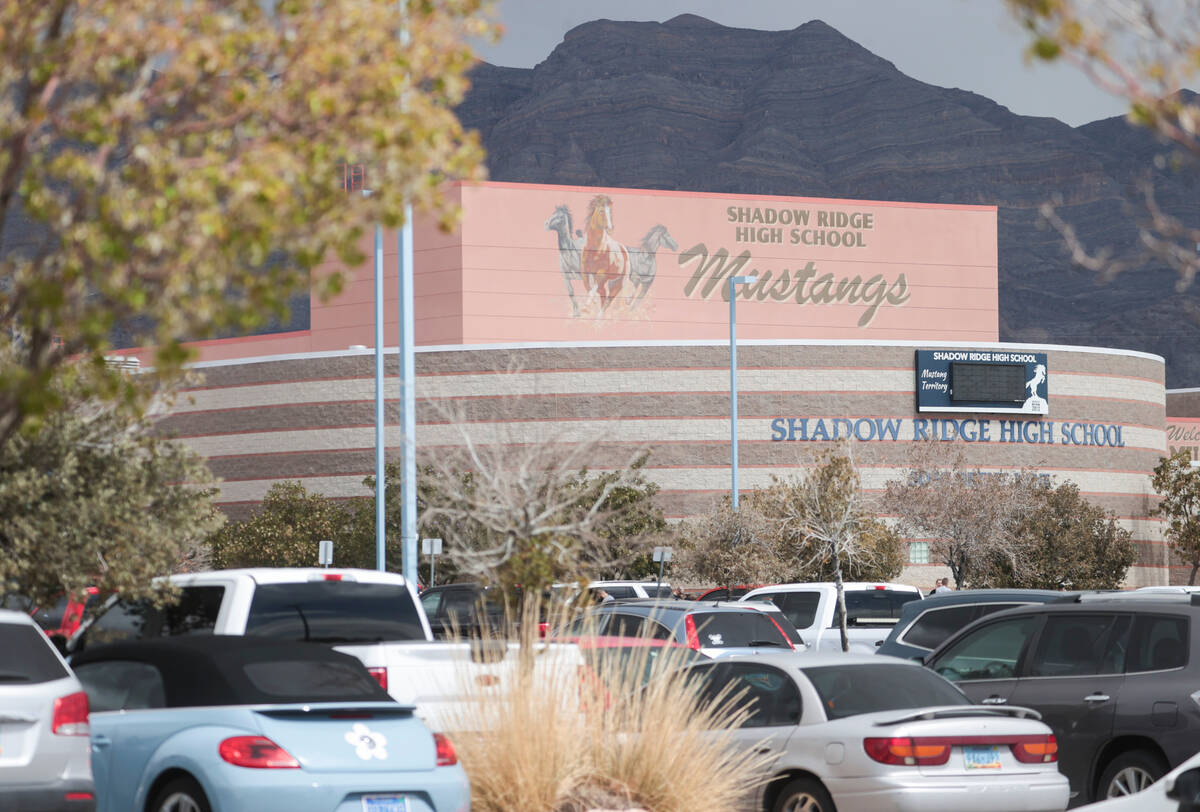How is the threat of gun violence affecting chronic absenteeism at CCSD?
After a hard lockdown at her school last month when teenagers hid for more than an hour, Shadow Ridge High School student Pamela Llamas decided to stay home the next day.
She didn’t feel up to going to school and felt like she needed a break. Her friends stayed home, too.
They weren’t alone.
About 65 percent of Shadow Ridge’s more than 3,000 students attended class the day after the incident, a marked drop from the school’s average attendance rate of 85 percent this school year.
“Going home from the lockdown, it was just draining overall,” the 17-year-old Llamas recalled.
On Wednesday, March 29, police received a report of a youth who was possibly armed with a gun in the hallways at Shadow Ridge. Students hid as police searched the campus. A gun wasn’t found, but a juvenile was charged with making “terroristic threats,” police said.
The incident happened just two days after six people, including three children, were killed in a private school shooting in Nashville, Tennessee.
The Las Vegas Review-Journal obtained attendance data from the Clark County School District, but it was unclear how many Shadow Ridge students weren’t in class specifically due to school safety concerns.
The nation’s fifth-largest school district, which has more than 300,000 students, is already contending with chronic absenteeism.
“As a reminder, there are several factors as to why a student may be absent including illness, family vacation, appointments along with other matters,” the district said in an emailed statement.
Fewer students at school after guns recovered
The Review-Journal also looked at a sampling of school attendance rates during one week in February when police confiscated at least six guns at district schools.
At Mack Middle School, a 13-year-old boy brought a loaded handgun to campus on Feb. 23.
The next day, 83 percent of students were in class — down from the 86.8 percent average daily attendance rate this school year.
Two guns were recovered from two students Feb. 21 at Eldorado High School, with guns found the same day at Escobedo Middle School and Mojave High School in North Las Vegas.
Student attendance rates the following day were:
■ 81 percent at Eldorado, down from an average of 84.1 percent.
■ 81 percent at Mojave, down from 83.9 percent.
■ 90 percent at Escobedo, down from 91.6 percent.
A ninth grade boy was also arrested Feb. 17 at Palo Verde High School after a loaded handgun was found in his backpack. The next weekday was a Monday, Presidents’ Day, so students weren’t in class.
The district said in a statement that the numbers do not vary significantly from the average to indicate a particular causation.
“To draw any conclusion without sufficient data is to commit a hasty generalization, and we urge people to avoid such fallacies,” the district said.
Chronic absenteeism
Nearly 37 percent of district students were considered chronically absent — missing 10 percent or more of their school days — during the fall semester.
That’s an improvement over last school year’s rate of about 40 percent, but still higher than the district’s target goal of 16 percent.
The district also saw an increase in violent incidents and fights on school campuses after students returned to in-person classes following the COVID-19 pandemic.
There’s a correlation between violence at school or crisis events and absenteeism, said Samuel Song, a professor of school psychology at UNLV.
“Absenteeism is really bad, obviously,” Song said, noting there are many contributing factors. “If students don’t go to school, they’re not learning.”
Song said there’s also a link between chronic absenteeism and students dropping out, and having a sense of safety in school is extremely important for learning, school success and graduation.
Impact of school violence
Naturally, parents and students are concerned about safety when coming back to school after a traumatic event, depending on what occurred, according to Song, whose research includes topics such as school violence, school safety and restorative justice.
Schools can do a lot to assuage some of those concerns, he said, including communicating how it’s ensuring safety.
The impact of an event like a lockdown is worse for children who have existing mental health concerns such as an anxiety disorder or history of trauma, he said.
There are also students who may have a sense of being desensitized to events like a lockdown, he said, and a number of youth are resilient despite incidents happening on campuses. But, he said, it depends on the severity of the crisis event that precipitated the lockdown.
Pamela’s mother, Lorena Llamas, said she fears that every time there’s a shooting anywhere in the country, it might motivate copycat acts.
It puts her on edge sending her children to school, and she has an underlying fear every day now.
“I wish it wasn’t like that,” she said. “I think it’s very distracting to their environment.”
Llamas said she also keeps her phone on her at all times when her children are at school in case they need to contact her.
Llamas said Shadow Ridge administrators did an excellent job on the day of the lockdown with sending emails frequently to keep parents updated.
Pamela Llamas returned to classes at Shadow Ridge on the Friday following the lockdown. She said most of her teachers didn’t talk about what happened during the lockdown, describing it as a laid-back day in her classes.
Since then, she’s noticed an increase in school police around campus, but said it otherwise feels like things have gone back to normal.
The day after the lockdown, Llamas’ brother, 15-year-old Hector Velazquez, went back to school because he had wrestling practice.
School was quieter, and it seemed like there weren’t as many lights turned on and fewer tables in the cafeteria, he said.
His classes — which usually have about 30 to 40 students — were sparsely attended, with only about 10 to 15 students in each one, he said.
“When I walked in the school, it just felt empty,” he said.
Contact Julie Wootton-Greener at jgreener@reviewjournal.com or 702-387-2921. Follow @julieswootton on Twitter.




















